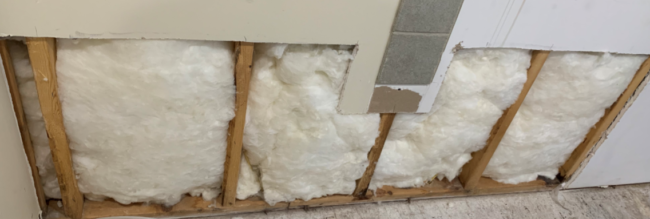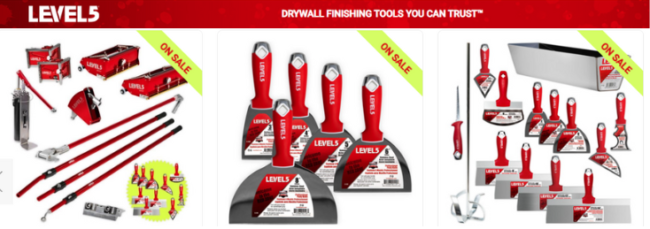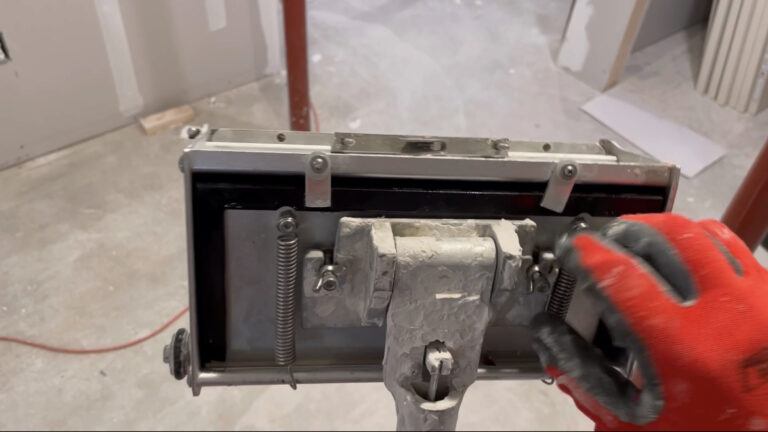The Best Tools You Should Have For Patching Drywall
If you’re a homeowner looking to patch drywall yourself, I’ve created a list of tools for patching drywall for first-timers. Patching drywall isn’t a hard task at all. I’ve been doing it for years now through my business Patch Pros, and I’m going to share the different tools for patching drywall that I have used. If you don’t have all of the tools, no problem. I can offer you suggestions on alternatives you can use to get the job done!
Taping Knives
Once you have your drywall patch installed and screwed in, you’ll have to tape and mud over the joints with joint compound. Drywallers use taping knives to accomplish this task. Now, depending on the size of your patch you may want to get a different size knife. You can definitely accomplish a drywall patch with only one knife, though contractors do not prefer it. If you decide that you just want to spend the money and have 1 taping knife, I recommend just getting an 8″ taping knife, as it’s the center of the choices in the market.
Taping knives come in many sizes: 3″, 4″, 5″, 6″, 8″, 10″, 12″, 14″, 16″, and so on. If this is a one-time thing, you can use an 8″ knife to get it close enough. If you are OCD like me and prefer things to be as perfect as you can, I’d recommend getting a full set.
Getting a full set of taping knives for patching drywall will be a handy set to have for the home should something else come up in the future. Many companies offer a discount if you buy a full set. Out of all of the taping knives I have, I use my 4″, 6″, 10″, and 12″ the most. Each of them has its own use which I explain in a different article.
If you’re looking for a comparison of different taping knives, you can view my article at Best Drywall Taping Tool set – A Professional Drywallers Guide.
Budget Taping Knife Set
If you are looking to stick to a budget, I’d recommend grabbing a stainless steel set – these will last you the longest! They are designed to withstand rust. This Goldblatt set is stainless steel, and has the best price out there as far as taping knives.
Oscillating Multi-Tool For Drywall Patches
My first go-to tool for cutting drywall is an oscillating tool. An oscillating tool has always given me the straightest cuts. I typically begin with the oscillating tool because I like to create a clean, square patch. If you are patching for the first time, making the area a square will help you tremendously.
If you do not own, or want to purchase an oscillating tool, the job can still be done with a sheetrock knife or a drywall jab saw. Keep in mind, the alternatives to an oscillating tool will be handheld. So the time it takes to complete the task will be longer than using a battery saw.
As an Amazon affiliate, I earn from qualifying purchases.
Impact Drill
Using an impact drill for drywall is my personal favorite. In my opinion, it gives you the most control than conventional drills. Impact drills are typically smaller than your average drill, but that’s what I like. I like to feel how much control I have over the drill, and not to mention the weight difference definitely helps my hands and wrists. They fit comfortably in your hand and you never have to worry about it twisting your wrist if you go too far! It’s also a great tool to have in your arsenal if you ever need to work with wood; decking boards, lumber, framing, or any DIY projects you have planned. If you do not have an impact drill, it’s totally okay! You can still get the job done with a regular drill. Just make sure when you screw, it goes in slightly past the face of the drywall. You will create an unnecessary hump if it isn’t drilled in enough. If you screw in too far, it’s useless. Just try again 1″ above or below the attempted screw.
As an Amazon affiliate, I earn from qualifying purchases.
Sheetrock Knife
Having a sheetrock knife is a must-have tool for patching drywall. Drywall is very easy to size and cut to fit perfectly for any drywall patch. Sheetrock knives allow you to score the white paper side of the drywall, then bending the drywall afterward will cause it to snap to your marked and scored line. I’ve seen guys that try to actually use a circular saw to cut drywall… please don’t do this. It causes an insane amount of dust and it’s pointless for a small patch. A Sheetrock knife is a cheap tool for patching drywall and it is the most effective!
Conclusion
You really don’t need a lot of tools for patching drywall. In this article, I summed up my top 4 tools for patching drywall that you can use to get the job done effectively and efficiently. If you have most of these tools already, I hope I saved you some time and money for doing your drywall patch. If you have any questions feel free to drop a comment below! I’d love to hear your feedback and I will personally respond to your questions or comments. Thank you again for reading about tools for patching drywall.





